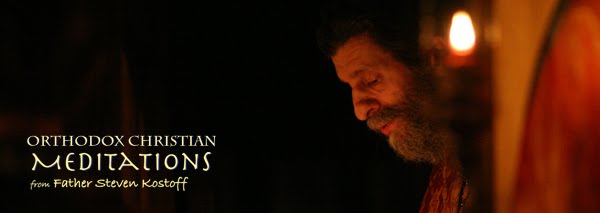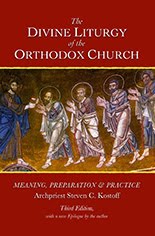
Dear Parish Faithful,
As we set upon the second week of the Fast, direct our steps, O Lord; shine upon us with the sanctifying light of Thy commandments, and make us worthy to offer on bended knees a prayer acceptable to Thee; for Thou art our Father and we are Thy children. With fear we sing Thy praise and call upon Thy Name.(Monday Matins of the Second Week)
The first week of Great Lent culminated in the celebration yesterday of the “Sunday of Orthodoxy.” This is an annual commemoration rooted in an historical event from the Byzantine era of the Church’s long history: the restoration of the holy icons to the Church following the long and protracted Iconoclast Controversy (726-787; 815-843). The outbreak of a second phase of iconoclasm (literally, “icon smashing”) – 815-843 - occurred even though the Seventh Ecumenical Council of 787 reaffirmed the essential presence of the icon in the Church by establishing it on a firm theological basis. That basis, of course, was the Incarnation: the Word of God becoming flesh and dwelling among us. The Word became depictable since He assumed matter in the Incarnation; the “matter” of the fullness of human nature, comprised of a reasonable soul and a real body. The incarnate Word of God – Jesus Christ – was heard and seen (and “touched with our hands” – I JN. 1:1). The icon is thus the artistic and aesthetic witness to the Incarnation: “We confess and proclaim our salvation in word and images” (Kontakion of the Feast).
When the second outbreak of Iconoclasm was overcome by a local council in Constantinople, a concrete display of this “victory” over the heresy of Iconoclasm took the form of a solemn procession in the capital city with the clergy bearing icons and banners around the magnificent temple of Hagia Sophia. This took place on the first Sunday of Great Lent in the year 843. That, again, is the event that has been annually commemorated from that day to the present. Although perhaps seen today as somewhat quaint and antiquarian, the Sunday of Orthodoxy reaffirms the Church’s dogmatic Tradition centered in the Incarnation of the Word of God which reached something of a fullness of expression in the aftermath of the Seventh Ecumenical Council. These conciliar definitions of the Faith proclaimed that the eternal Word and Son of God, in “the fullness time,” was incarnate of the holy Theotokos and Ever-Virgin Mary, as Jesus of Nazareth, the Christ of God. In His one Person were united two natures – the divine and human. As the Word of God He is uncircumscribed; but as man He was circumscribed. The icon is the image of the Person of the uncircumscribed Word in His circumscribed humanity. As such we venerate the icon of Christ.
In his fine book, Guide to Byzantine Iconography, Constantine Cavarnos summarizes the defense of icons offered by St. John of Damascus in the 8th century. St. John wrote three famous treatises in defense of the icon known by the general title Against Those Who Decry the Holy Icons. Cavarnos gives an excellent survey of the many-faceted defense offered by St. John. He concludes by citing the seven functions given to the icon by St. John in the following manner:
1) Icons are means of honoring God, His Saints, and holy angels.
2) They serve as means of instructing in matters of the Christian Faith, of the teaching of the Church.
3) They remind us of this teaching.
4) They lift us to the prototypes, to the holy personages whom they depict, to a higher level of thought and feeling.
5) They promote virtue and the avoidance of vice, by arousing us to imitate these holy personages.
6) They are conducive to our sanctification.
7) They enhance the beauty of churches.(Guide to Byzantine Iconography, p.241-242)
The icon is multi-dimensional in its role in the life of the Church. If we meditate on the seven functions of the icon as perceived by St. John, we can enter into the mystery of the icon and its profound attraction on the spiritual seeker who thirsts for a glimpse of heavenly reality. This can also to serve to deepen our own appreciation and veneration of the icon, both in the church and in our homes.
Fr. Steven







